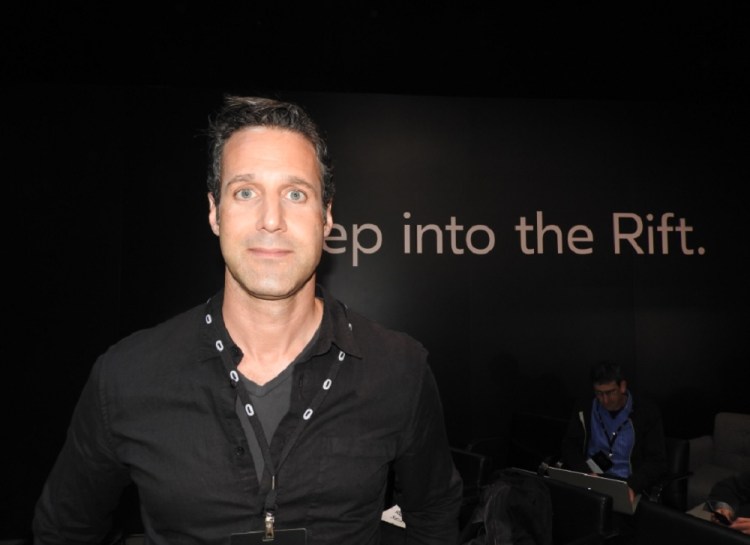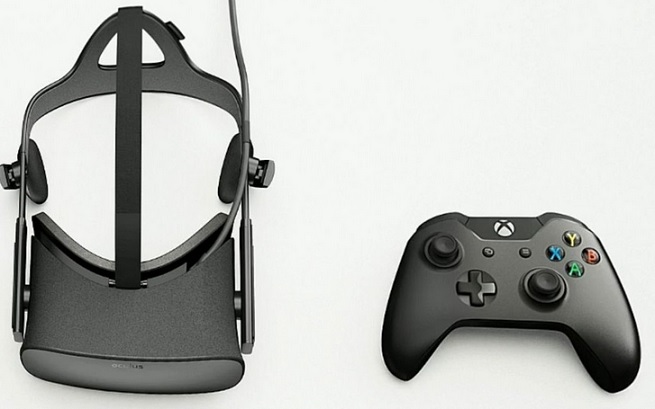Jason Rubin’s job as the head of studios at Oculus VR is to imagine the kind of games and other apps we’ll experience in virtual reality. He has helped line up a bunch of heavy-duty game studios, including Ready at Dawn and Insomniac Games, to create new experiences for the Oculus Rift virtual-reality headset.
He went on stage after numerous partners described the kind of games that they’re making for the launch of the Rift in early 2016. Rubin promises that the Rift will make next year an incredible one. Oculus will invest more than $10 million in independent games on the Rift.
I caught up with Rubin after the Oculus press event in San Francisco on Thursday. Here’s an edited transcript of our interview. He promises more cool game demos from other companies at the Electronic Entertainment Expo, the big gaming trade show in Los Angeles next week.
“This is the only beginning,” he said.
GamesBeat: What kind of role were you playing up to now to make all this happen?
Jason Rubin: I’m the head of studios. Mostly I was focused on content. That’s what Oculus brought me on to do and what excited me. I look at this like the transition from 2D to 3D. There’s a big challenge. You take Mario and say, “How does that work in 3D?” This is a bigger challenge than that.
GamesBeat: Are you dealing with internal people or external as well?
Rubin: For the most part Oculus is partnering with external developers. We have a few people inside to test various theories we have, but we’re not a big internal game studio company. We don’t have any major internal studios.
GamesBeat: What sort of people did you want to get in contact with? You have some triple-A folks up on stage.
Rubin: As you can see today, we have a big focus on indies as well. We’re dropping $10 million into the ecosystem to spur innovation. At the same time, there’s a graphic fidelity and a quality of scope and scale that only a big studio can create. Oculus is working with everyone from Insomniac and CCP, very big studios, down to one or two people in a basement who are young, nimble, and creative, making very interesting new VR experiences.
We’re not focusing on anybody. If you look at the list of developers we’re taking to E3, they range from Code Saints, which is pretty small, all the way up to Insomniac and CCP.
GamesBeat: It seems like they’ve had a pretty good runway to get started and progress so far.
Rubin: CCP and Playful got in really early. That’s why everyone knows their titles. They said, “We’re all in.” A lot of the other developers you’re seeing today have been in VR for six months or less. They’re getting to a point where they’re feeling their legs. You’re starting to hear that from Ted and the others.
GamesBeat: We have a flight sim that we’ve seen. The variety of experiences goes from there to where?
Rubin: My guess is, what’s going to happen is we’ll start with a lot of experiences that developers know how to make. They’re going to be great experiences. But as time passes, and also with new input devices, we’re going to branch out into new experiences. There are going to be old genres that don’t translate, old genres that translate with a little work, old genres that are awesome and made even better, and then a ton of new genres that are called for in VR.
I’d imagine we’ll see an explosion of different types of games. After a bit more experimenting, people will start hitting with totally new things that we don’t even know how to define for a few years.
GamesBeat: What sort of games might be fine for the controller, and what might be more for the Oculus Touch?
Rubin: We don’t know what the final control mechanism in VR is. I’m getting more and more convinced that there will be multiple final control mechanisms in VR. The controller looks the way it does by no accident. It is the evolution, the Darwinian movement of control into the perfect form factor to play the type of games that console and PC developers have made. It’s a fantastic device for controlling those games for many hours. In some cases tens of hours in single sittings for some people. It’s an incredible device for doing that.
On the other hand, it has no location, no position, no haptics, no gesture, none of that stuff to get into the next generation. We had to create another set of devices that starts to take advantage of VR. The question you ask is, can there be a device created that does both? As we thought about it and researched it, we came to the conclusion that if you change the Xbox controller, you’re creating an imperfect controller. Obviously the PlayStation 4 controller is very good as well, but those controllers are what they are because of that evolution. As we started strapping things on it and moving buttons and doing all the things we want to do, we were ruining to core functionality of that controller, which allows you long gameplay, incredibly precise control, and a large number of simultaneous buttons.
When you get free of the need to duplicate that, you end up with a controller that’s like this – small, nimble, has a lot of new input devices. It allows for a lot of flexibility, but I’m not sure I want to spend 20 hours in a character action game with a separated controller. The solidity of having your hands together gives you that micro-movement. Separating it—I’m not so sure you’re going to get that precise movement. Having said that, if I wanted to swashbuckle or do 3D guns or pick something up off a table, I can’t do that with the other controller. I think we’ve come up with a perfect solution for control.
GamesBeat: Do you have a way to get multiple players in the same experience?
Rubin: Absolutely. If you come see the new controllers, the positional controllers, at E3, it’s a two-player experience. You’ll have another person in the room with you virtually giving you a demonstration. They’re 20 feet away in another booth using an identical setup. So absolutely. That works really well. That’s what Palmer was saying. When you start saying things like “Pick up the lighter” and pointing, you’ll see their finger and think, “Oh, there’s the lighter.” With the positional sound it’s just fantastic. You can throw things at them and bat them back.
GamesBeat: One final thing is sound. Why is sound so important?
Rubin: This is an easy one. VR is taking over your inputs, your senses, and creating a feeling that you’re somewhere else. In the case of Oculus, the eyes are the key that we’re going after. We’re not going after your inner ear. We’re not going after smell. But we are going after the eyes. That’s key.
We thought we had sound years ago, when we created stereo and then surround sound and all these technologies. Actually, that never really reproduces sound like we experience it in the world. There’s a lot of reasons for that. One is, we don’t know where your head is or what’s going on with your head. Sound plays the same regardless of what’s going on with your head.
VR brings an entirely new capability to capture perfect 3D sound. We know where your head is. We can model your ears into the sound and manipulate the sounds based on that. It’s a long technical way of saying this: if someone walks up behind you and says, “Boo!” you know exactly where they’re standing. If some ship flies over you and you can’t see it, you still know it’s up there. When you walk into a room and there’s dripping water behind you, you know the dripping water is behind you. If you hear a tiger growl, you know it’s in the next room to the left. You can feel the depth, how far it is, the directionality, the space around you. We literally model your head, so that subtle changes from behind your ear and in front of your ear all work.
All of a sudden sound got reborn in VR. We’re going way in with 3D sound. You can’t have a 3D experience visually without the 3D sound to back it up.
GamesBeat: What are some of the way-out things you think people will eventually create as far as only-in-VR experiences?
Rubin: I’m looking at the next year or two. The way-out stuff, I think the next year or two is going to teach us the foundation of what we need to get to that. It’s like asking Apple, “You’re about to launch an app store. What do you think it’s going to do?” Someone is not going to answer, “Oh, it’ll get rid of hotels and taxis through Uber and Airbnb.” The functionality was placed and then people came up with the brilliance based on that.
We’re giving people an incredible tool set to develop with. It’s going to take a while for us to figure out what brilliance that leads to.
VentureBeat's mission is to be a digital town square for technical decision-makers to gain knowledge about transformative enterprise technology and transact. Learn More





